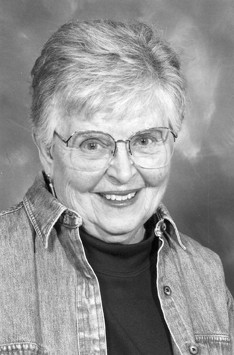Rabbitbrush Rambler: The Valley’s early milling

It was mainly a seasonal business that thrived when crops were being harvested and wagons lined up at the mill from dawn until late in the day, while the customers dozed and chewed the rag. The crop and thus the milling business depended on how cooperative the weather had been and how well the crops had done. Some things don’t change.
Carretas and wagons lined up at mills from dawn to dusk. In the early years, when trade was done by barter, the miller kept some of the grain as his pay in exchange for the flour or meal that he kept. The miller then could sell what was in his bins. He might sell it in a store he himself owned or to some other store owner, to the fort at Fort Garland, to the Indian agency or at one of the mining camps or new towns if there was a passable road and someone with a pack train or a wagon to haul the sacks.
The first settlers in the San Luis Valley on its east side transported corn and flour from Taos. It has been said that settlers at San Luis were using ditch water for milling in 1853, and by1854 water was being conveyed for milling via the Manzanares Ditch from Costilla Creek to what became today’s Garcia, CO.
The mill at San Luis was built in 1859 by Harvey Easterday in partnership with Ceran St. Vrain. By 1860 they were ready to advertise their “American” flour. This type was bolted through cloth to remove large granules and debris and was preferred by their American newcomers. The Easterday & St. Vrain mill on the east side of the highway was later was replaced in the 1870s by the larger mill on the west side of the highway, where it remained a familiar landmark until recent years.
At first, the settlers who settled at Guadalupe on the north side of the Conejos River in 1854 ground their grain by hand using manos and mutates, but in 1856 José Maria Jaques, their leader, built a water-powered mill using water from the Guadalupe Main Ditch. The decree for that ditch is dated 1855.
On the south side of the river east of the town of Conejos, Lafayette Head, an ambitious former soldier and trader in the Chama River Valley, built another mill on the Lafayette Head Ditch with a decree for water rights dated 1855. In 1867 he built a roller mill which was a thriving operation that later burned down, possibly in an act of vandalism. A mill stone that is on the south side of ASU’s Richardson Hall may have been moved from Head’s mill site.
Another ambitious man, Otto Mears, was at Conejos for a short time before moving north to Saguache County in the mid-1860s. In this new agricultural area, he opened a store. In 1873 he built the mill west of town that became known as the historic Robertson’s Mill. Never one to let grass grow under his feet, Mears quickly recognized that his enterprises needed improved transportation to markets, so he hacked out the toll road over Poncha Pass to transport grain and flour. And the rest is history.
With the era of railroading came pioneers, modern agriculture, big mills, and the cotton bags that thrifty homemakers used for kitchen towels and even made garments from the material. Mills were landmarks in towns out on the prairie and in the San Luis Valley. By the 1890s, Alamosa, La Jara, and Mosca had large mills. Alamosa’s was on the south side of the railroad tracks with a sign proclaiming Alamosa Milling and Elevator Company. It burned a few years ago.
Alamosa’s and the other mills were subsidiaries of Denver’s Colorado Milling and Elevator Company. This corporation has undergone name changes, but some of us fussy bread bakers still like to use the good old Hungarian Stone-Ground Flour that John Mullen used to mill and sell up in the Queen City of the Plain and that Walmart still stocks, believe it or not.
And north of Monte Vista, the Gosar family takes justifiable pride in grinding and selling its stone-ground Mountain Mama flour today.



